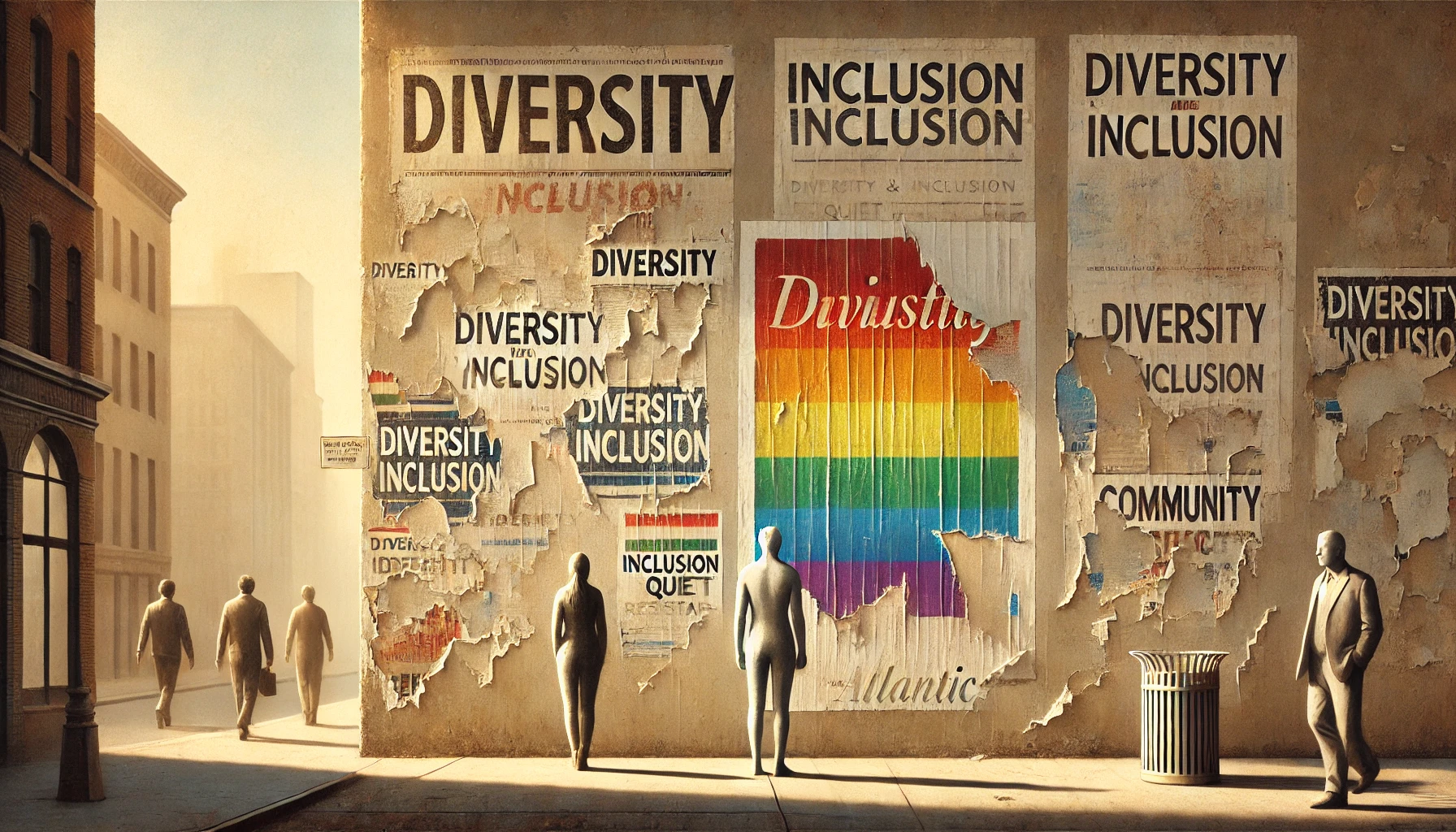Reading Time: About 4 minutes
Most of what I share here is analysis—stories about brands, culture, and the patterns that shape how we consume and communicate. This post is different. It’s not a trend. It’s not a case study. It’s personal—deeply so. But I felt it was important to say out loud, especially now.
I came out late in life. My delay was partly due to a lack of self-awareness. Partly denial. But mostly, fear. And fear, I’ve found, is the hardest to unlearn.
By the time I came out, I had spent years navigating corporate America at a very senior level with great caution—editing what I shared, scanning for risk, believing that restraint was strategy.
When I was growing up, “queer” was a slur—a word that cut. It carried shame, danger, and a warning: stay small, stay quiet. It wasn’t always that way. In George Chauncey’s excellent book, Gay New York, he provides evidence that before World War II, “queer” could be a virtue. In many communities, it was used without stigma—sometimes even with pride. But after the war, that changed. The word became pathologized. And in response, “gay” began to surface—not just as a celebration, but as a kind of code. A way to sidestep the shame without saying too much. It was strategic and necessary when full visibility came at too high a cost. The closet was not inevitable, Chauncey argues. It was constructed. And that’s the part we have to confront now. Through language and politics, the closet is being reconstructed. We’re in the midst of a social strategy to control, contain, and erase queer life.
So far this year, five U.S. states have formally petitioned the Supreme Court to overturn Obergefell v. Hodges—the decision that guarantees marriage equality–and at least four others have introduced legislation aimed at limiting or dismantling marriage equality at the state level. At the same time, anti-LGBTQ+ hate crimes are rising sharply. The latest FBI report shows a 23% increase in violence based on sexual orientation, and a 16% increase against trans and nonbinary people. All while our federal government is penalizing universities, law firms, private industry, and the media for acknowledging diversity and promoting equity and inclusion.
At the University of Southern California, where I am a professor, our leadership recently changed one of our “unifying values” from diversity, equity, and inclusion, to the more anodyne word: community.
This is not just editing or wordsmithing. This is hostile rebranding.
And as someone who’s spent a career rebranding some of the world’s biggest companies, products, and services, and studying the narrative of brands, I see what’s happening. When culture feels threatened, it doesn’t always advance—it sometimes retreats. It falls back on familiar tropes. In branding, we know how powerful and dangerous that instinct can be. Retro is cool, but nostalgia kills.
In my early work, I explored how brands did more than sell products—they activated stories in our heads. Stories about who we are, and who we might become. Aspirational stories. Identity stories. Queerness, too, is a story—and it’s always been about the freedom to imagine something beyond the default.
A few months ago, one of my students came to me distressed. They wanted to go into consulting. But some of their peers—queer peers—had advised them to tone down their queerness to get the job.
That hit me hard. I struggled with what to say. Because the truth is, I toned it down too. For a long time.
Well, in all honesty, my idea of “toned down” might’ve been… optimistic.
In a pep talk on the eve of my coming out, my therapist asked, “Do you really think people will be surprised?”
I can laugh about that now, but back then there was nothing funny about my fear. Fear was the closet. It feels like we are heading in a direction where the next generation will be led to falsely believe they must return to this closet because they fear it is the only path to their aspirations. But that strategy will deprive us of the progress we have made and the richness that exists when our community is visible and authentic.
Toning down your queerness might help you fit in—but it also means leaving one of your greatest assets off the table: your ability to read culture, challenge assumptions, and bring fresh perspective. As it turns out, that’s what great consultants are hired to do.
Professionalism isn’t about suppression. It’s about purpose, curiosity, and courage. The best clients don’t want sameness—they want insight. If a firm values conformity over contribution, that’s not a plum job. It’s a trap.
So how do we respond?
Share your story. Don’t underestimate the power of your voice. You don’t have to be loud. Be real. Visibility isn’t vanity—it’s strategy.
Support the institutions doing the work. The ACLU, Lambda Legal, HRC—they’re defending the ground others are trying to erase.
Reward the brands that show up. Apple and Costco faced pressure this year to abandon DEI. Both stood firm. That deserves our support, our loyalty, and our dollars.
Shape your workplace from day one. Culture is built by the people who speak up, act up, and represent, not just the ones who sit at the top of the pyramid.
If you’re early in your career—interning, job hunting, just starting out—know this: leadership isn’t something you get handed later. It’s something you practice now.
Ask your employer what they’re doing to protect LGBTQ+ workers. Even if you’re the youngest person in the room, asking the question raises the standard.
Use your influence in small ways—who you advocate for, who you mentor, who you invite in.
Lead with integrity. Defend inclusion in the meetings no one posts about.
I won’t lie to you—bias exists. And some firms are more performative than progressive. But that’s not a reason to hide. That’s a reason to lead.
The closet was a flawed strategy. So was the silencing of the word “queer.” So is what we’re seeing now—a hostile rebranding campaign to edit us back out of the frame. The world doesn’t need more polished versions of the same. It needs your difference. Because your difference is what teaches others how to lead with empathy. With range. And with truth.
Others can write us out of their story but they can’t keep us from telling ours. As you write your story, choose a version that doesn’t flatten yourself to fit. Lead with the one that makes you whole.

